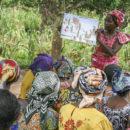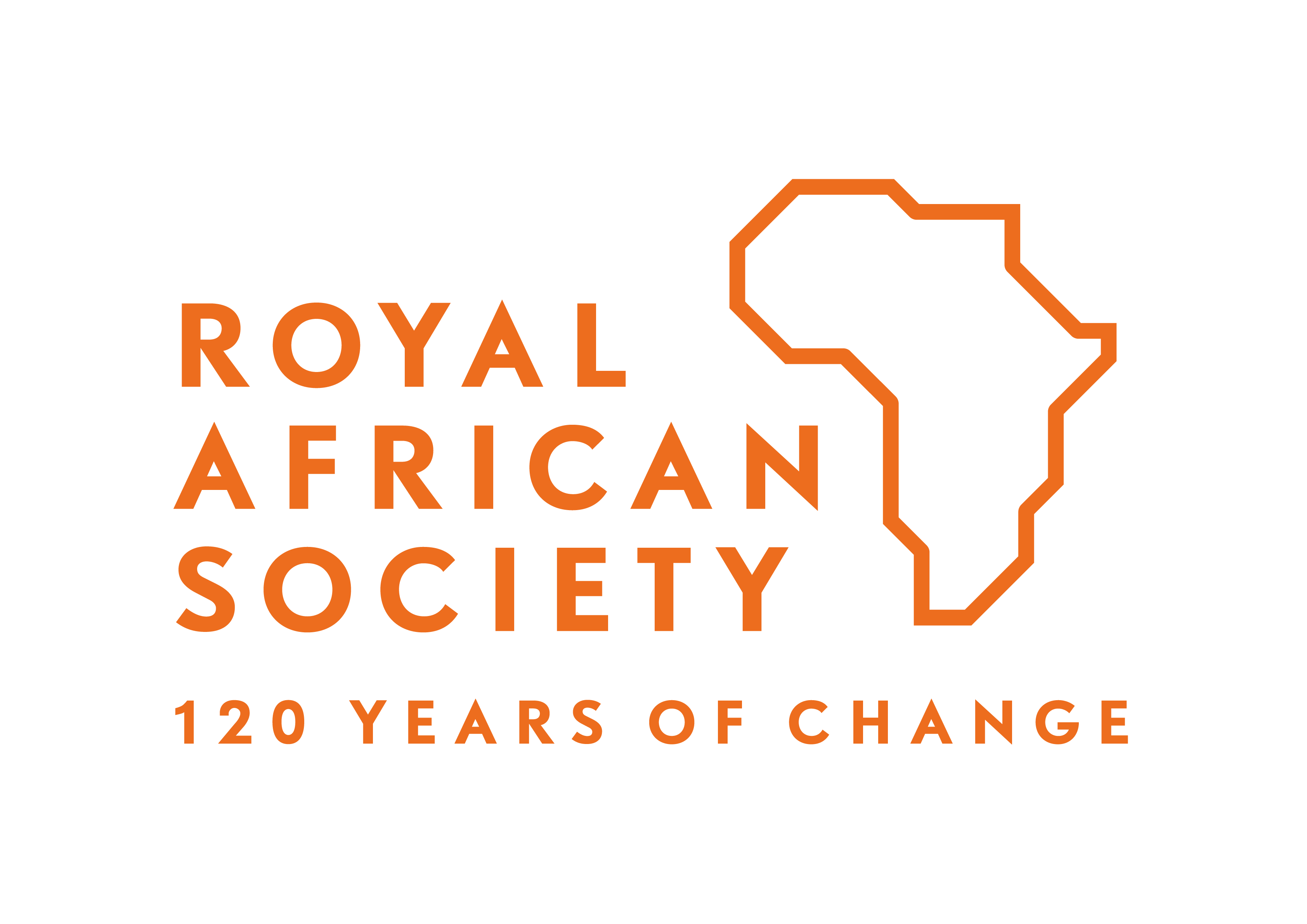Civilizing Projects, Tribal Administration and the Color Khaki
When Mohamed al Dabi, retired general, was sent as Presidential Representative to Geneina in January 1999 he insisted that he be allowed to don his army uniform. “˜The people will only respect me if I wear khaki,’ al Dabi said. Khaki was the color of the British Leviathan in Darfur, and as late as the 1960s, Sudanese administrators continued to wear it. During his sojourn in Geneina, General al Dabi summoned the chiefs of the warring Masalit and Arab tribes and demanded that they settle their differences through an inter-tribal agreement, putting on a display of force””including military helicopters””for effect. The episode resembled a colonial pacification exercise, and in many ways that is what it was.

A century and four months earlier””on 10 September 1898, to be precise””Winston Churchill described the battlefield of Omdurman, where the British machine guns had slaughtered (according to the official count) 10,800 Sudanese a week earlier, in a letter for publication in a newspaper. First, he wrote of “˜the terrible machinery of civilized war,’ and then thought better of it, crossed out the word “˜civilized’ and wrote in “˜scientific’ instead. (See: Edward Spiers, ed. Sudan: The Reconquest Reappraised, London, Frank Cass, 1998, Appendix 2.) The British army was helped by the fact that, in the words of Hilaire Belloc, “˜whatever happens, we have got, the Maxim gun, and they have not.’
Mahmood Mamdani does not detail the lethality of the imperial conquest””though arguably it was the first military encounter, which destroyed Dar Fur’s government and the Fur aristocracy, which was most important. He concentrates instead on what he portrays as a rigid framework of administrative and territorial tribalism, constructed by the British occupation, which entrapped Darfur and led to today’s crisis. Mamdani is surely correct that the legacy of Britain’s 39 years of rule over Darfur is profound. But from there on, he and I diverge.
British colonial rule in Darfur was brief””the first administration was set up in 1917, Dar Masalit was incorporated only in 1923, and the handover to Sudanese civil servants began in 1953. At any one time there were no more than eight or ten British administrative officers in the territory. Mamdani is correct to see the “˜native administration’ system of rule through chiefs, established in the 1920s, as a reactionary invented tradition. He is also right to identify the system of tribally-controlled territories (dars), adapted from the pre-colonial hakura system, as containing the seeds of conflict. But the social re-engineering of Darfur under British rule was neither as rigorous nor as complete as Mamdani claims””native administration was always work in progress, the racial ordering of society was little more than a conceit of the Civil Secretary’s reports, and any imperial “˜civilizing mission’ was just a pretence for the home front.
I prefer to locate the enduring impact of the colonial encounter in certain norms of governance which not only lived on, but ripened, in the half century after the British departure. Ironically, it was the most resolutely anti-western government in Sudan””the “˜National Salvation Revolution’ of the 1990s””which most lived up (or down) to those norms. Under the Islamist regime, colonial governmentality was reborn in a series of administrative reforms including the revival of “˜native administration’ through its project of “˜return to the roots’, and the adoption of the “˜civilization project’ (al-mashru’ al hadhari). In seeking to reject the colonial legacy and reach for deeper forms of authenticity, the cadres of National Islamic Front in fact re-created a hybrid of modernity and reaction which had remarkable continuities with the approach taken by their British forebears. But whereas the British Leviathan imposed its military hegemony first and only then constructed its elementary structures of administration, the National Salvation regime pursued its ambitious transformative project, at the same time as using the reinvented “˜native administration’ as a tool for frontier vigilantism and counterinsurgency.
Rather than Sir Harold MacMichael, it is the ideas and practices of Hassan al Turabi, Ali al Haj, Abdalla Ali Masar, Abdalla Safi al Nur, and their colleagues, which deserve pride of place in any analysis of how ideas of identity, race, and authority were written into contemporary Darfurian society. In contrasting “˜saviors’ with “˜survivors’, Mamdani could have more sharply critiqued the promise of the “˜National Salvation’ project and why it was so disastrous.
Martin Daly is surely correct in asserting that Mamdani mis-states the objective and overstates the impact of Darfur’s colonial encounter. The archives are full of reports and correspondence which describes British political officers tinkering with the tribal-administrative arrangements to make them conform to realities that were never as neat. They failed as often as they succeeded, and the hierarchies and territories of native administration remained unfinished business by the time new hybrid systems of local government were introduced after World War Two.
But the future of Sudan””and Darfur””was shaped by how colonial ideas of society were adopted by Sudanese rulers. In the lay usage of educated Sudanese, the term “˜tribe’ has come to imply a primordial entity. Beliefs about “˜African’ and “˜Arab’ tribes, promoted by MacMichael and debunked by Mamdani, remain widely held. I have listened to Arab sheikhs describing how their ancestors were the immigrant bearers of civilization to backward African tribes, and sometimes I feel I am hearing the voice of MacMichael echoing down the generations. In rural Sudan one can not infrequently listen to a local leader seeking to validate a claim to land or chieftaincy by referring to a memorandum written by a colonial officer early in the last century. Such a claim is usually forwarded in a context of dispute over long and foggy histories of who lived where or who exercised what jurisdiction over whom during past generations. The colonial document is less a certification of how things actually were than a claim to how they should be””akin to a constructed genealogy. This argument-from-archive seems to imply that the British administrators possessed a special privileged insight into the nature and history of rural Sudan, obscure to the Sudanese themselves. But the use of the argument is to legitimize a particular claim, particularly when it might be tested in a modern court of law.
The secular independence-era educated class saw the native administration system as an anachronism and an embarrassment, and wanted it abolished. In Darfur and Kordofan the replacement systems didn’t work and some form of tribal mechanism resurfaced in the vacuum. As James Morton has argued, it was a choice between “˜native administration or no administration.’ Native administration was brought back by the ambiguously modernizing Umma Party in the late 1980s, chiefly as a concession to its power base in the rural aristocracy but also because the central government had neither the resources nor the will to develop a better system of local government. An amalgam of tribal leaders and military administrators resolved the 1987-89 war. In passing, I should add that Mamdani gives too much credit to the incoming National Salvation government for this achievement. The peace conference had been in session for several months before the coup, and the delegates’ trepidation about what the incoming regime might do fortuitously rushed them to conclude their peace agreement a few days after the coup.
It was the resolutely modernist Islamists who in the 1990s who (re-)introduced Native Administration in a systematic way. The salvation project was not an innocuous exercise. Certainly, the series of local government reforms of the 1990s was a response to a real challenge of a weak rural administration. But the reforms also promoted ideological and political agendas. The project of “˜return to the roots’ as part of the “˜civilization project’ aimed to resurrect an authentic Islamist society. This borrowed from diverse sources, including (claimed) Arab-Islamic origins for socio-cultural forms and notions of primordial tribal identities, the latter a borrowing from the British cultural archive.
In the National Salvation government’s first, militant phase, establishing tribal authority was coterminous with awarding jihadist titles to tribal chiefs and providing them with vehicles and arms. It also had the aim of promoting groups seen as more suitable material for Islamist mobilization and transformation, such as the constituencies loyal to Ali al Haj in Darfur. Restricting the power of the Fur was part of the story, along with creating a bulwark against possible SPLA or NDA radicals, and undermining the power base of the Umma Party. In the last decade, control over native administration has become an instrument of counterinsurgency and the management of a lawless periphery. It is a mechanism for the allocation of reward””a means of buying loyalty and practicing divide and rule. The militarization of tribal authority was perhaps the Bashir government’s most lethal contribution to Darfur’s disaster.
In Dar Masalit, the unique history of the area””the truest example of colonial-era “˜indirect rule’ through a semi-sovereign native authority who possessed jurisdiction over a multi-ethnic domain, situated in an area in which Chadian Arabs were recent settlers””made these reforms particularly explosive. In Dar Masalit, the native-settler dichotomy is salient, but it is a local political issue, directed specifically against recent Chadian Arab immigrants, and is not transferrable to relations between Fur villagers and Arab pastoralists in general in Darfur.
The National Salvation government in Darfur ultimately rested on military power. But it is only an aspirant Leviathan. The color of authority in Darfur is still khaki””but the government doesn’t monopolize it.
Mamdani’s account of the Darfur rebellion contains errors which I am sure his critics will be in a hurry to point out. Let me pick up just one point: the way in which the counter project of the insurrectionary elite also bears the imprint of colonial governmentality. Many are disaffected Islamists who shared in the National Salvation project in its early days. Others are secularists, inspired by the “˜New Sudan’ of the late John Garang. The opposition, both internal and in the Diaspora, reads the past differently to the rulers in Khartoum. In denouncing government manipulation of native administration and land tenure, they imply that there was a previous system, more authentic and more effective””and typically refer back to the colonial era to certify their version.
The practical governance of resistance in the field and in the IDP camps is diverse but the SLA leadership prefers to see this as a temporary aberration, prior to returning to an improved version of the status quo ante. In due course, the urbanism of the camps may generate new political leaders with different visions, but to date any such re-fashioning remains below the political radar. More political effort has been directed towards external salvation rather than building political infrastructure inside Darfur. The opposition’s preferred Leviathan also wears khaki, but it is the uniform of international troops, envisaged as a benign form of military occupation””the “˜saviors’ of Mamdani’s title. I will write more on Mamdani’s critique of “˜Save Darfur’ later, but here let me just point out that he misses the chance to explore the similarities and differences between the two contending “˜salvation’ projects. One obvious difference is that the international salvation effort hasn’t actually killed people, though it has threatened to do so.
Both the SLM and JEM leaderships follow in a hallowed revolutionary tradition in using a language of ethnic grievance to mobilize their local constituents while framing their political agenda in national terms. Noting that Abdel Wahid al Nur included Arabs in the SLM leadership from the earliest days and Khalil Ibrahim has always presented himself as spokesman of all Sudan’s marginalized, I am unsure what to make of Mamdani’s exhortation to them “˜to make an alliance that cuts through the native-settler divide.’
In conclusion, Mamdani has done us an important service by pointing to the imperial legacy in Darfur. But I submit that he does not accurately capture the most important element of that legacy. The colonial era administrative, ideological and territorial arrangements were indeed a shackle, but one that Darfur could readily escape. It was a reconstituted and sharpened version of the colonial trap, designed and built by the radical Islamists and their security chiefs which snared Darfur.






